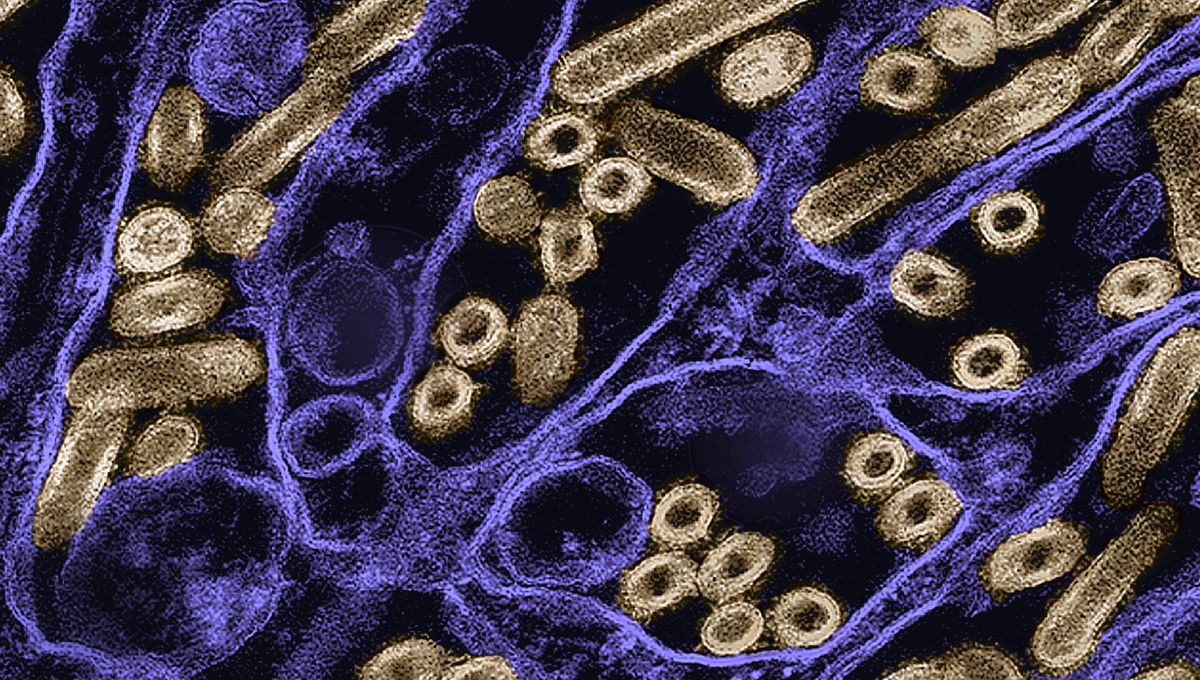
Researchers at The Jackson Laboratory (JAX) may have just cracked one of medicine’s biggest challenges: how to stop influenza in its tracks, no matter the strain. A carefully designed triple antibody cocktail protected mice from nearly every flu strain tested, including highly dangerous avian and swine variants.
Current approved flu drugs target viral enzymes. Sounds good, right? Unfortunately, influenza constantly mutates, so often these treatments are useless within weeks. In contrast, this new antibody therapy provided lasting protection and resisted viral mutations, even after repeated exposure over a month.
The scientists engineered monoclonal antibodies tailored to target M2e from hybridoma cells (lab cells commonly used to produce antibodies). Mice were injected with the antibodies before or after viral infection, following approved care and protocols for animals. Their protection was measured by survival, weight loss and virus levels in the lungs.
Single and double antibody treatments struggled with effectiveness, resulting in 33 to 44 percent survival rates in mice. But when combined into a triple-antibody cocktail, the therapy showed universal, long-lasting protection, leading to 88 percent survival in mice infected with both human flu and zoonotic avian flu viruses – even highly pathogenic strains like H7N9 bird flu.
“This is the first time we’ve seen such broad and lasting protection against flu in a living system,” said the study’s senior author, Silke Paust, an immunologist at JAX, in a statement. “Even when we gave the therapy days after infection most of the treated mice survived.”
Current flu drugs bind onto viruses and block them from infecting cells; this mechanism is regarded as “neutralizing”. On the other hand, the new antibody cocktail uses a non-neutralizing mechanism by focusing on the M2 protein – a proton channel found on the virus and infected cells.
The effectiveness of the antibody therapy depended on engaging immune receptors (FcγRI, FcγRIII, FcγRIV). These allow important immune processes such as antibody-dependent cellular cytotoxicity (ADCC), phagocytosis, and degranulation – basically functions carried out by natural killer cells, macrophages, neutrophils, and other immune cells to destroy bad cells.
“The majority of antibodies our bodies make are non-neutralizing, but medicine has largely ignored them,” explained Paust. “We show they can be lifesaving. Even with lethal strains like H5 and H7 avian flu, this therapy saved lives long after infection had taken hold.”
The N-terminal domain (M2e) of the M2 protein is conserved across influenza strains, meaning it is unlikely to mutate in that area, so it is a promising universal target.
“The virus didn’t mutate away even when using individual antibodies,” clarified Paust. “But in a flu season with millions of people taking this therapy, I would be much more confident that we can prevent escape from the therapy if we use the cocktail.”
One of the most exciting findings is that the triple antibody cocktail remained effective even when given up to five days after infection. Mice treated within three days had 100 percent survival rate, and up to 60 percent when treated five days after. This matters for real-world applications, since people usually start treatment after symptoms appear. Another good news is that the treatment requires only very low doses, “which is also promising because potential therapies could be cheaper and less likely to produce adverse side effects in people.”
The therapy not only reduced death rates but also lowered lung virus levels and eased disease severity. In long-term experiments, the researchers found no evidence of mutants and resistance against the triple antibody cocktail. This is a huge advance, as flu is notorious for adapting under therapeutic pressure.
The findings raise the possibility of an entirely new class of flu treatments that could be prepared in advance and deployed immediately during seasonal outbreaks or pandemics. Unlike vaccines, which take months to develop and may not match emerging strains, these antibodies could provide immediate protection, particularly for high-risk populations such as the elderly and immunocompromised.
“We need something that is off the shelf when we don’t necessarily have the time to make a new vaccine if we do have an outbreak or pandemic where lethality is high, so this type of therapy could be readily available for anyone in any situation,” said Paust.
Translating from mouse models to humans is always a hurdle. The team are now working on “humanized” antibodies for clinical trials, modified to work safely and effectively in people without activating an immune defense against the treatment itself. For now, wrap up warm when flu season comes; sadly the antibody cocktail isn’t quite ready just yet.
This study is published in Science Advances.
Source Link: With A New Drug Cocktail, Scientists May Have Finally Found Flu’s Universal Weak Spot